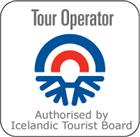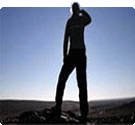
| Convert ISK |
|
|
|
|
|
|
|
|
| Reference only |

Factbook
Geography of Iceland, Summary
Location: European island in the North Atlantic (3 hours' flight from London, 5 ½ hours from New York).Capital: Reykjavik (pop. 111,000 (2000)).Total area: 103,000 km² (39,756 square miles); vegetation: 23%, lakes: 3%, glaciers: 11%, other: 63%.Sea area within fishing limits: 758,000 km².Coastline: 4,970 km.Physical Geography
Geologically speaking, the country is very young and bears many signs of still being in the making. It appears on the whole roughly hewn, abrupt and jagged, without that softness of outline that characterizes a more mature landscape. Its average height above sea level is 500 m, and its highest point, Hvannadalshnukur in the glacier Öræfajökull, reaches 2,119 m. One-quarter of the country lies below 200 m. The biggest lowland areas include those of Arnessysla, Rangarvallasysla and Vestur-Skaftafellssysla in the south, and the Myrar area in the West. These lowlands represent strandflats, a result of marine abrasion and glacier erosion during the Pleistocene era.Glacial erosion has played an important part in giving the valleys their present shape, and in some areas, such as between Eyjafjörður and Skagafjörður, the landscape possesses alpine characteristics.
The neo-volcanic zones between the Tertiary basalt areas present another type of landscape. Here, characteristic features are extensive plateaus - both high and low - with volcanos, many of which have been built up subglacially, rising abruptly above the plateaus. The numerous gaping fissures and fault steps within the active volcanic belts make a striking feature.
Coasts
Iceland's coasts can be divided into two main types. In the regions not drained by debris-laden glacial rivers, the coastline is irregular, rocky and incised with numerous fjords and smaller inlets. They offer many good natural harbours since the innermost parts of the fjords have often been deepened by glacial erosion.The other type of coast is sandy with smooth outlines, often featuring extensive offshore bars with lagoons behind them. The beaches from Djupivogur in the southeast to the river Ölfusá in the southwest are nearly all of this type and contain no good natural harbours. Parts of the coasts of Faxaflói and Breiðafjörður depict the Norwegian strandflat-skjergard style.
Soils
The soils may be roughly grouped as mineral soils and organic soils, with a number of intermediate types. The mineral soils are loessial, formed to a greater or lesser extent by wind-transported (eolian) materials. Such material, supplied by tephra from explosive volcanic eruptions and from other powerful physical forces such as glacier erosion and frost weathering, causes a rapid thickening of the soil profile. Because of the cool climate, the chemical and biological processes involved in soil formation react slowly. Generally, the soils are well supplied with a rather weak degree of acidity (mineral soils pH 5.0-6.5, organic soils 4.5-5.5). Owing to the tephra falls and eolian dust, Icelandic peat soils, which form about 40% of the total soil cover, have a high mineral content, frequently 20-50%. Icelandic soils possess many properties which make them suitable for agricultural utilization, but they generally require rather heavy fertilization.Erosion
Soils in Iceland contain a low percentage of clay, so their structure is weak and susceptible to erosion by wind and water. The arrival of man with his grazing livestock in a virgin country, which before the settlement had no herbivorous mammals, greatly disturbed the somewhat unstable equilibrium between the soil-building and soil-eroding processes. Through wood-cutting, forest fires and grazing livestock (mainly sheep), and to some degree due to deterioration of climate, the once extensive birch woods were devastated. The result left soil destruction by wind and water on a catastrophic scale. It is estimated that about half of the country's area was covered with vegetation when settlement began about 1,100 years ago, and about half of that area has now been deprived of its soil cover. Large areas still suffer from soil erosion, but successful efforts are now being made to counteract it and to protect threatened areas.Adapted from "Iceland - The Republic", Handbook published by the Central Bank of Iceland, ed. by Mr. Jóhannes Nordal and Mr. Valdimar Kristinsson, Reykjavik 1996. The Mission is responsible for the adapted texts.
People, Summary
Population (December 2000): 283,000 (2.7 per sq. km).There is still controversy as to the motives of the first widespread Nordic settlement in Iceland. Some sources say that the Norsemen were fleeing the tyranny of King Harald Finehair, who was uniting the whole of Norway under his command at the time. Others put this movement in the context of the general Viking expansion of the period, plausibly linked to population pressure in Scandinavia and increasing scarcity of farming land or to serious setbacks of the Vikings in Norse colonies in the British Isles.
However, the core of the settlers were thus Nordic people, coming mostly from Norway and Nordic settlements in the British Isles. The Scandinavians from the British Isles brought with them people of Celtic origin, so there are traces of Celtic influence in, for example, some of the Eddaic poems and in a few personal and place names. This blending of people and cultures, in which influences from all over Scandinavia and other regions where Scandinavians had settled, may explain in part why the Icelanders, alone of all the Nordic peoples, produced great literature in the Middle Ages. Since the settlement of Iceland was mostly complete by the middle of tenth century, immigration of foreign elements has been minimal until the past few decades.
Around the year 1100, the population, then entirely rural, is estimated to have been about 70 - 80,000. Three times in the 18th century it sank below 40,000 but by the year 1900 it had reached 78,000. It had passed the 100,000 mark in 1925; in 1967 it reached 200,000 and in 1999 the population was 279,000. The population of the capital area in 1998 was 167,959. The average life expectancy for men is 77.0 years and for women 81.5 years - one of the world's highest averages.
In 1880 there were only three towns in Iceland, where 5% of the population lived. By 1920 about 43% of the population lived in towns and villages with more than 200 inhabitants. By 1984 there were 23 towns and 42 villages where 89.2% of the population lived, while only 10.8% lived in rural districts and 1998 there were 30 towns and 94 other municipalities in Iceland.
Iceland is the most sparsely populated country in Europe with an average about three inhabitants per square km. Almost four-fifths of the country are uninhabited and mostly uninhabitable, the population being concentrated in a narrow coastal belt, valleys and the southwest corner of the country.
